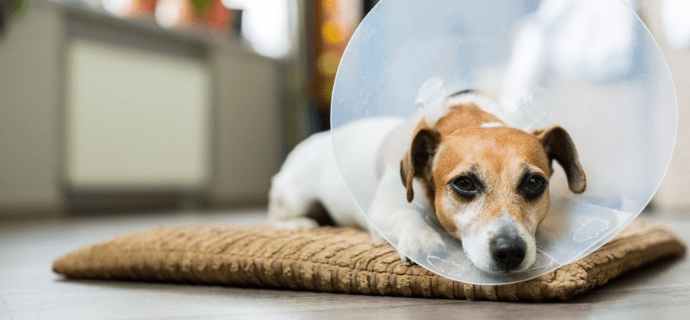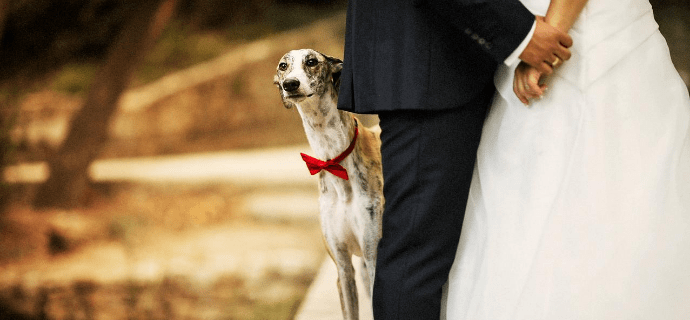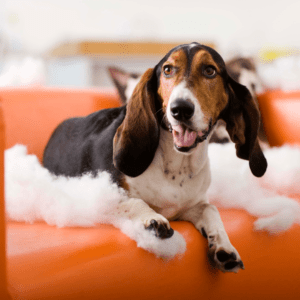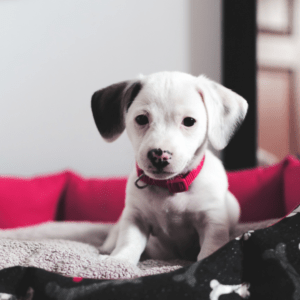Does Your Lockdown Dog Have Separation Anxiety?

Are you worried how your dog will cope now you are returning to the office? 3.2 million households added a new pet to their family during lockdown. The majority of these new pets have had the luxury of round the clock company but now the nation is returning to work. How will this effect these pandemic pooches?
Destructive Dogs
Here at Animal Aunts, we have had a dramatic increase in calls looking to provide animal sitters for dogs that are disruptive or destructive when left alone.
These dogs might urinate, defecate, bark, howl, chew, dig or try to escape. Sometimes, this can look like a lack of basic house training, but these behaviours can also point to symptoms of distress.
Just like us, dogs are very social animals. They would naturally live in family groups, hence the term ‘pack of dogs’, and have ‘evolved’ alongside humans over thousands of years. The majority of dogs would choose to spend most of their time in the company of humans. Why? Because being alone just doesn’t come naturally for most.
Separation Anxiety
In addition to the behaviours mentioned above your canine friend can show further signs of anxiety. This can manifest itself as excessive drooling and showing distress or agitation such as panting and pacing when you prepare to leave the house. Once you have left the home the dog may attempt to escape by destroying the area around exit points, particularly at doors and windows. When you are home, your dog may attempt to follow you wherever you go in the house.
Whilst these are not desirable behaviours, it is important to understand how your dog feels. Particularly if they are a pooch who has had the luxury of 24/7 hot and cold running humans!
Before working towards a solution for your dog’s separation anxiety please visit your vet to first rule out any medical problems which may present as separation anxiety. For example, incontinence could be the result of a urinary tract infection, old age, hormone-related problems, bladder stones, diabetes or kidney disease. Destructive behaviour could be a sign of boredom.
Reducing Separation Anxiety
It’s a good idea to teach a puppy or new dog to get used to your absence for short periods of time. This is advisable even if you do not intend to leave them alone for long.
Firstly, choose a place within your home where you are comfortable leaving them. Whilst an area such as a utility is great due to easy to clean surfaces, you may want to consider choosing a room where they would naturally spend time. This is because if they are only placed in this area when they are left alone, they may associate it with isolation.
Next, prepare the area. Using stair gates is helpful to separate yourself from the dog whilst they can still see and hear you to ease them into being left alone. Put a comfortable bed and water in this room. You could give them some small treats to help settle them. Consider using a TV or radio to provide a little background noise and ‘company’. Our dogs have told us they exclusively like to listen to Jeremy Vine! Placing an item of clothing you’ve worn recently in your dog’s bed may also help your pooch to feel more secure as you build on this training.
Training
Randomly during the day, place your dog behind the stair gate with a tasty treat. After a few minutes, open the stair gate – ideally you want your dog to be relaxed and still engrossed in the treat. Allow your dog to decide whether to stay in the room or leave.
Gradually increase the time your dog is left behind the stair gate until you feel that they are relaxed enough for you to be out of sight completely. Stretch the length of time you are out of sight. If the dog begins to seem anxious, then go back a few steps and increase the time away slowly again.
When you return resist the urge to excitedly greet them. Likewise, if you come home to find your dog has soiled the area or damaged something, keep calm. Punishment will be detrimental to the training and may put you back to square one.
Need More Help?
If you have followed the steps above and feel your beloved dog is still distressed, you may consider hiring a dog walker/sitter to ‘pop in’ to visit your dog. Hiring an Animal Aunt will ensure you are hiring someone who will continue with your training with the end goal of your dog being content when left at home alone.
If you feel you have not been able to successfully train your dog the Association of Pet Behaviour Counsellors or the Animal Behaviour and Training Council will help you to find a reputable behaviourist or trainer local to you.
There are also products available that can be of benefit. Products that release pheromones can help dogs feel more relaxed. For example, Adaptil Calm Home Diffuser is clinically proven to reduce the signs of separation-related problems after just one month (when combined with advice from a behaviourist):
- 91% less destruction to furniture and belongings
- 75% less house soiling
- 65% less barking
Filled under: Animal Aunts, Dog health, Dog Sitting, Dog Training, No Category
Tagged with: Dog Health, dog training, lockdown, separation anxiety










